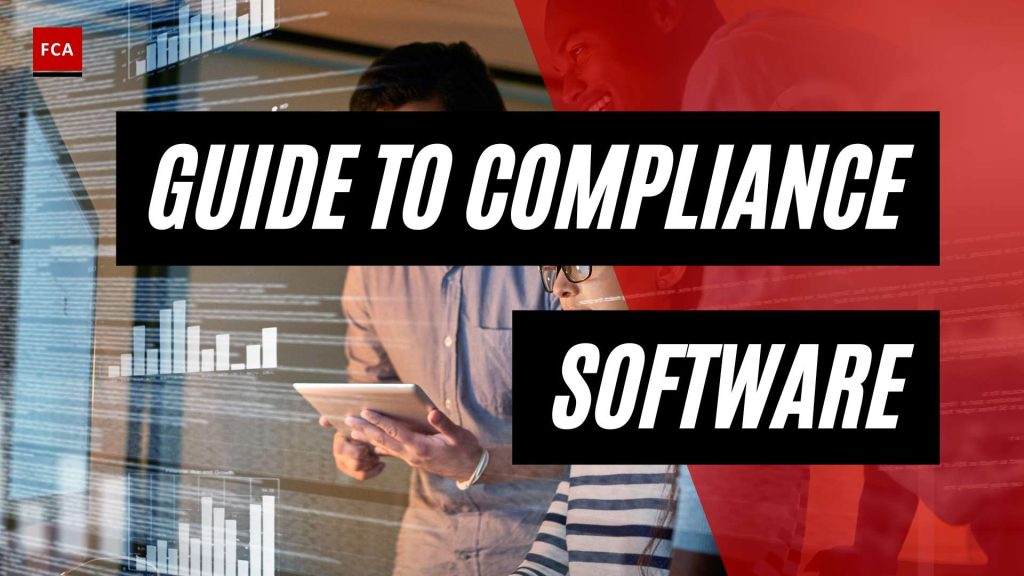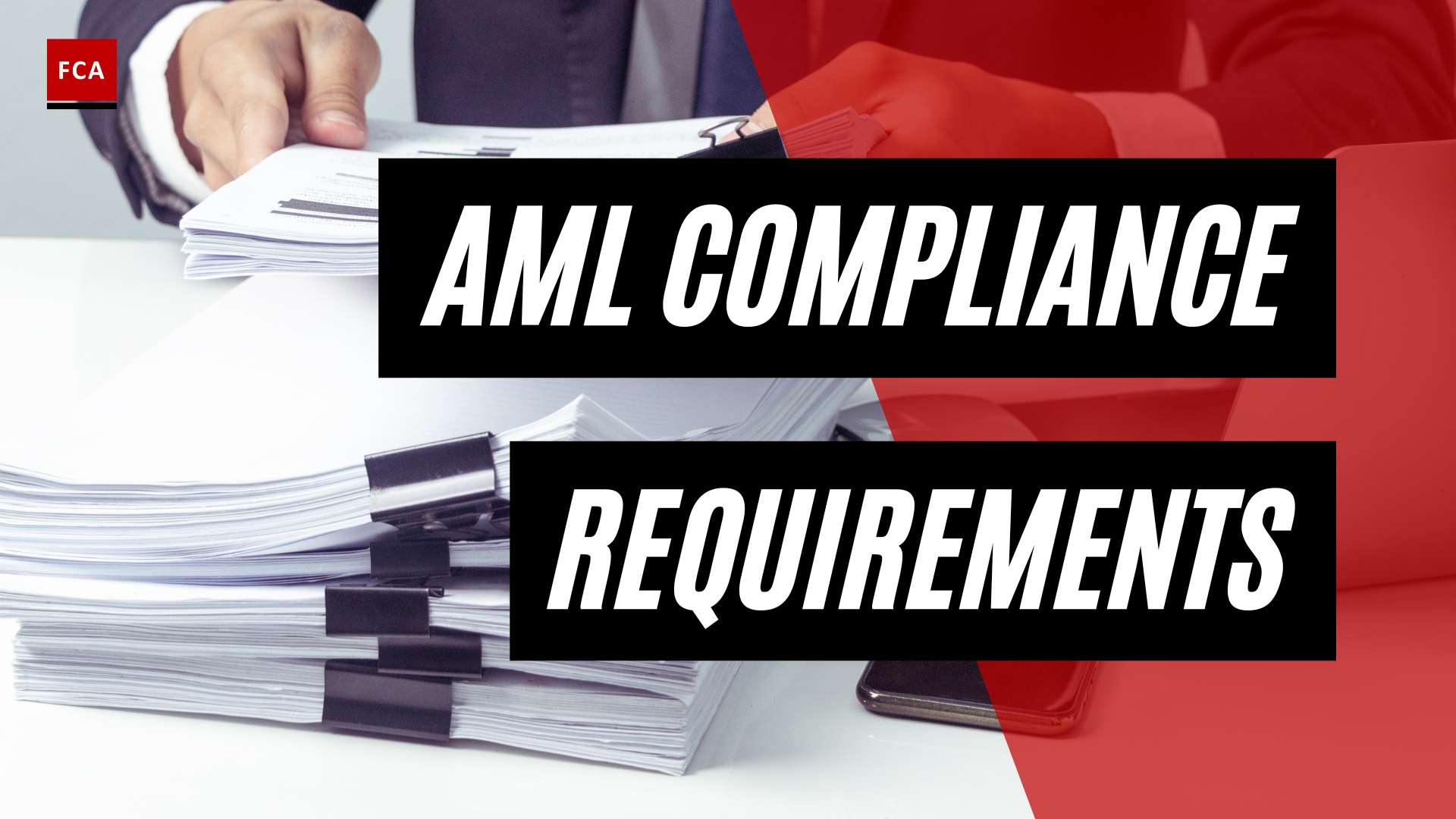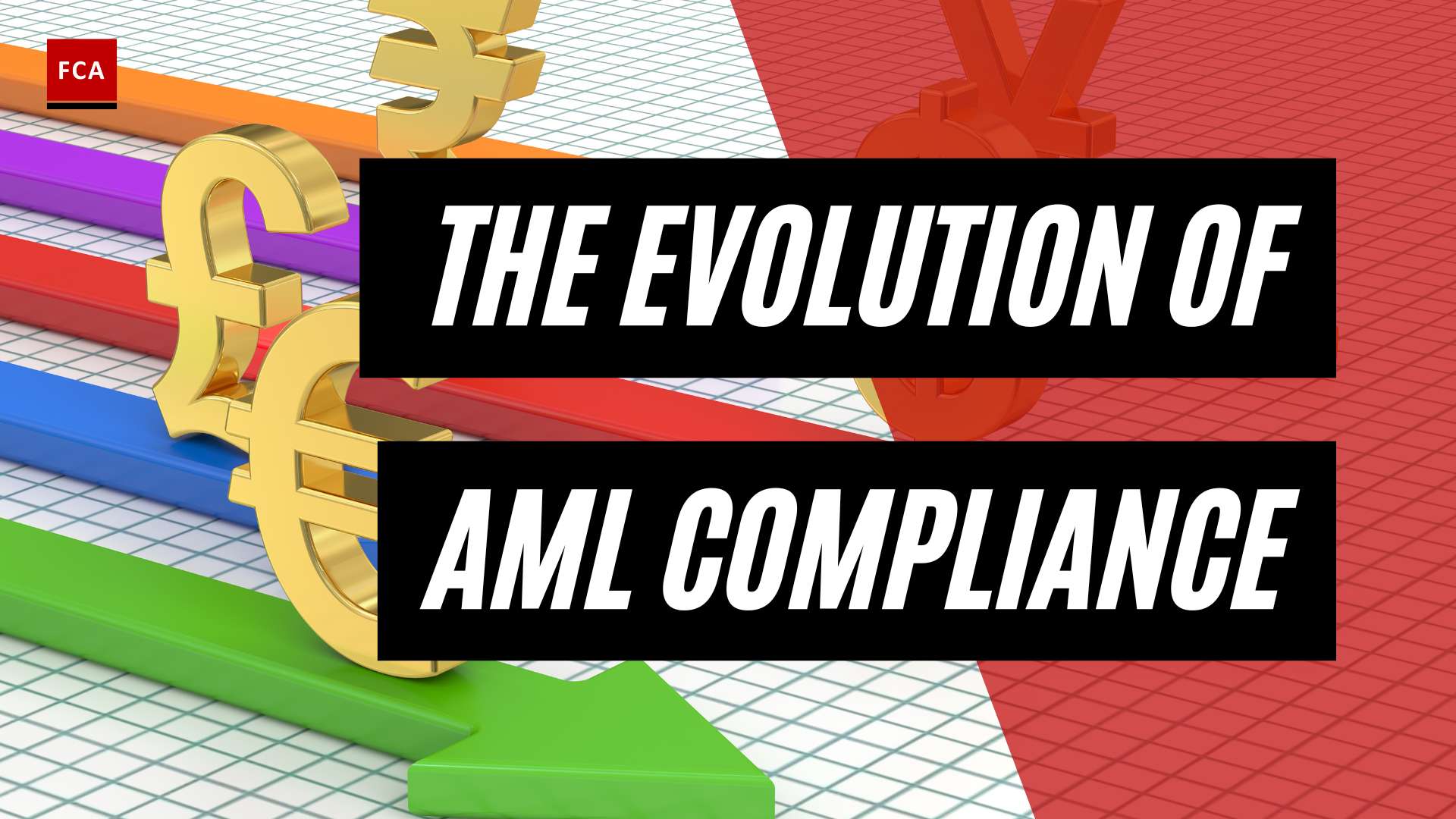Understanding AML Compliance
In the world of anti-money laundering (AML) compliance, it is crucial for financial institutions to have a strong understanding of what AML compliance entails and why it is of utmost importance.
What is AML Compliance?
AML compliance refers to the set of policies, procedures, and internal controls implemented by financial institutions to detect, prevent, and report money laundering and other illegal financial activities. Money laundering involves transforming illicitly obtained funds into legitimate assets, making it difficult to trace the origins of the funds.
AML compliance programs are designed to identify and mitigate the risks associated with money laundering and terrorist financing activities. These programs typically include customer due diligence, transaction monitoring, and reporting of suspicious activities. Financial institutions are required to comply with various AML regulations, such as the Bank Secrecy Act (BSA) and the USA PATRIOT Act, to ensure the integrity of the global financial system.
Importance of AML Compliance
The importance of AML compliance cannot be overstated. Financial institutions that fail to comply with AML regulations not only face substantial fines but also significant reputational damage. The consequences of non-compliance can be severe, impacting the institution’s ability to operate and maintain relationships with customers and business partners.
By implementing robust AML compliance programs, financial institutions can detect and prevent fraud, money laundering, and terrorist financing activities. These programs play a vital role in safeguarding the integrity of the financial system and protecting the institution and its stakeholders from legal and reputational risks.
The use of AML compliance software is instrumental in achieving effective AML compliance. This software assists financial institutions in identifying and reporting fraudulent activities, providing necessary tools to maintain compliance with regulations. It enables institutions to generate comprehensive reports, audit trails, and alerts, facilitating regulatory examinations and ensuring transparency in compliance efforts.
In summary, AML compliance is critical for financial institutions to mitigate the risks associated with money laundering and other financial crimes. It is not only a legal obligation but also a means to protect the institution’s reputation, maintain trust with regulatory authorities, and contribute to the stability and integrity of the global financial system. The use of AML compliance software plays a crucial role in enhancing compliance effectiveness and streamlining compliance processes.
Developing an AML Compliance Program
To establish a strong Anti-Money Laundering (AML) compliance program, organizations must carefully consider key components, regulatory requirements, and risk assessment and mitigation strategies.
Key Components of an AML Compliance Program
An effective AML compliance program encompasses several key components that work together to detect and prevent money laundering and other financial crimes. These components are:
-
Regulatory Alignment: Ensure that the program adheres to relevant AML compliance regulations and guidelines, such as those set forth by regulatory bodies like FinCEN or the Financial Action Task Force (FATF).
-
Understanding Risk and Risk Indicators: Conduct a thorough risk assessment to identify potential vulnerabilities and develop risk indicators that can help detect suspicious activities. This involves evaluating customer profiles, transaction patterns, and assessing the organization’s exposure to different types of money laundering and terrorist financing risks.
-
Data Quality and Handling: Establish robust data collection, storage, and management practices to ensure the accuracy and integrity of the information used for AML compliance purposes. This includes implementing data quality controls, data validation processes, and secure data storage.
-
Technology and Ongoing Assessment: Leverage AML compliance software solutions to automate and streamline processes such as Know Your Customer (KYC) due diligence, transaction monitoring, and suspicious activity reporting. Regularly assess and update the technology used to keep pace with evolving AML risks and regulatory requirements.
-
Training: Provide comprehensive training programs to employees on AML compliance policies, procedures, and best practices. Training should cover topics such as recognizing red flags, reporting suspicious activities, and understanding the organization’s obligations under AML regulations.
These components, collectively, form a solid foundation for an effective AML compliance program. For more detailed guidance on developing an AML compliance program, refer to our article on aml compliance program.
Regulatory Requirements for AML Compliance Programs
AML compliance programs are subject to regulatory requirements imposed by supervisory authorities, such as FinCEN. It is essential to understand and comply with these regulations to maintain a robust AML program. Regulatory requirements may include:
- The Bank Secrecy Act (BSA) and its Anti-Money Laundering (AML) provisions, which set the framework for AML compliance for financial institutions.
- Customer Due Diligence (CDD) requirements, which involve identifying and verifying the identity of customers and understanding the nature of their business relationships.
- Suspicious Activity Reporting (SAR) obligations, which mandate the reporting of suspicious transactions that may be indicative of money laundering or other illicit activities.
- Recordkeeping requirements, which specify the types of records that must be maintained, the duration of record retention, and the information to be included in these records.
To ensure compliance, organizations should regularly review and update their AML compliance programs based on changes in regulations and guidance from regulatory authorities. For a comprehensive understanding of AML compliance regulations, refer to our article on aml compliance regulations.
Risk Assessment and Mitigation Strategies
Conducting a thorough risk assessment is a critical step in developing an effective AML compliance program. Risk assessments help identify the areas of highest vulnerability and enable the implementation of appropriate risk mitigation strategies. Factors to consider during the risk assessment process include:
- Customer risk profiles, such as high-risk customers or politically exposed persons (PEPs).
- Transactional risk, including large or complex transactions, cross-border transactions, or transactions involving high-risk jurisdictions.
- Product and service risk, considering the potential for misuse or abuse of certain products or services.
- Geographic risk, focusing on regions known for money laundering or terrorism financing activities.
Based on the risk assessment findings, organizations can develop risk mitigation strategies tailored to their specific risk profile. These strategies may include enhanced due diligence procedures for high-risk customers, transaction monitoring systems, and regular internal and external audits.
By aligning themselves with regulatory requirements, understanding risk, and implementing effective mitigation strategies, organizations can establish robust AML compliance programs that protect against money laundering risks and help maintain the integrity of the financial system.
Selecting AML Compliance Software
When it comes to selecting the right AML compliance software, there are several key features to consider. AML compliance software plays a crucial role in helping financial institutions detect and prevent money laundering and other financial crimes. It enables real-time monitoring, reporting, and analysis, facilitating regulatory compliance and minimizing risks. By choosing the appropriate software solution, organizations can streamline their compliance efforts and enhance their effectiveness.
Key Features to Consider
-
Transaction Monitoring: A robust transaction monitoring feature is essential in AML compliance software. It allows financial institutions to monitor customer transactions in real-time, identify suspicious activities, and flag potential money laundering attempts. The integration of artificial intelligence (AI) and machine learning algorithms enhances the software’s ability to detect suspicious patterns and automate the process of identifying potential illicit activities.
-
Customer Due Diligence (CDD) and Know Your Customer (KYC): AML compliance software should include CDD and KYC functionalities to support customer onboarding and ongoing monitoring. These features enable organizations to verify customer identities, assess risks associated with customer relationships, and ensure compliance with regulatory requirements.
-
Risk Assessment and Scoring: AML compliance software should provide tools for conducting risk assessments and assigning risk scores to customers and transactions. This allows organizations to prioritize their compliance efforts and allocate resources effectively based on the level of risk associated with different entities and activities.
-
Alerts and Case Management: The software should have an alert management system that generates alerts when suspicious activities are detected. It should also include a case management feature to facilitate the investigation and resolution of flagged alerts. This enables compliance officers to efficiently analyze and address potential risks.
-
Reporting and Audit Trail: Comprehensive reporting capabilities are crucial for AML compliance. The software should generate detailed reports, audit trails, and documentation to demonstrate adherence to AML regulations. These reports are essential for regulatory examinations and foster transparency in compliance efforts.
-
Integration and Scalability: AML compliance software should be easily integrated with existing systems, such as core banking platforms and transaction databases. It should also be scalable to accommodate the growing needs of the organization and adapt to changing regulatory requirements.
Top AML Compliance Software Solutions
There are several reputable AML compliance software solutions available in the market. These solutions offer a range of features and functionalities to meet the diverse needs of financial institutions. Some of the top AML compliance software solutions include:
| Software Solution | Key Features |
|---|---|
| Software A | Transaction monitoring, CDD/KYC, risk assessment, alerts and case management, reporting and audit trail |
| Software B | Transaction monitoring, CDD/KYC, risk assessment, alerts and case management, reporting and audit trail, AI and machine learning capabilities |
| Software C | Transaction monitoring, CDD/KYC, risk assessment, alerts and case management, reporting and audit trail, integration with core banking systems |
| Software D | Transaction monitoring, CDD/KYC, risk assessment, alerts and case management, reporting and audit trail, scalability for large institutions |
These software solutions have proven track records in assisting financial institutions with their AML compliance efforts. However, it’s important for organizations to evaluate their specific requirements and conduct thorough assessments before making a final decision on which software solution to implement.
By carefully considering the key features and functionalities of AML compliance software and exploring the top solutions available in the market, organizations can make an informed choice that aligns with their compliance objectives and regulatory obligations.
Benefits of AML Compliance Software
Implementing the right AML compliance software can bring numerous benefits to financial institutions in their efforts to combat money laundering and maintain regulatory compliance. Here are some key advantages of utilizing AML compliance software:
Enhancing Compliance Effectiveness
AML compliance software offers advanced features and capabilities that enhance the effectiveness of compliance efforts. These tools employ machine learning algorithms and data analytics to detect complex money laundering patterns and flag suspicious activities for further investigation. By analyzing patterns, trends, and anomalies in transaction data, AML compliance software helps financial institutions stay ahead of evolving risks and improve their ability to identify and mitigate potential threats to their systems and processes. This proactive approach enables institutions to strengthen their compliance programs and effectively mitigate the risk of financial crimes, such as money laundering and terrorist financing.
Streamlining Compliance Processes
The implementation of AML compliance software streamlines the compliance process, enhances operational efficiency, and reduces the workload of compliance teams. These software solutions automate manual tasks, such as data collection, analysis, and reporting, which saves time and reduces the potential for human error. By automating Know Your Customer (KYC) processes, transaction monitoring, and suspicious activity reporting, AML compliance software significantly improves the efficiency and accuracy of AML processes. This allows financial institutions to handle high transaction volumes, minimize false positives, and optimize resource allocation towards high-risk cases. The automation of compliance processes also leads to cost savings by reducing the need for manual labor and improving overall operational efficiency.
Real-Time Monitoring and Reporting
One of the key advantages of AML compliance software is its ability to provide real-time monitoring of financial transactions. By continuously analyzing transaction data, AML compliance software enables financial institutions to promptly detect and investigate suspicious activities. Real-time monitoring allows institutions to identify potential risks and respond proactively to mitigate them, reducing the possibility of financial losses, regulatory fines, and reputational damage. Additionally, AML compliance software facilitates the generation of comprehensive reports, audit trails, and alerts, which are crucial for demonstrating adherence to AML regulations and fostering trust with regulatory authorities. These reporting capabilities ensure transparency in compliance efforts and facilitate regulatory examinations.
By leveraging AML compliance software, financial institutions can significantly enhance their compliance effectiveness, streamline compliance processes, and benefit from real-time monitoring and reporting capabilities. These software solutions play a crucial role in detecting and preventing financial crimes, ensuring regulatory compliance, and protecting the reputation and trust of financial institutions. As technology continues to advance, AML compliance software will continue to evolve, providing more sophisticated tools and capabilities to meet the ever-changing landscape of anti-money laundering compliance.
For a list of top AML compliance software solutions, please refer to our article on AML Compliance Software Solutions.
Implementing AML Compliance Software
When it comes to implementing AML compliance software, following best practices is essential to ensure a smooth and effective transition. Implementing such software can be a complex process, but with the right approach and strategies, organizations can overcome challenges and maximize the benefits of AML compliance software.
Best Practices for Implementation
To ensure successful implementation of AML compliance software, organizations should consider the following best practices:
-
Define clear objectives: Clearly define the goals and objectives of implementing AML compliance software. This will help establish a roadmap for the implementation process and ensure alignment with the organization’s compliance strategy.
-
Engage stakeholders: Involve key stakeholders, including compliance officers, risk management teams, IT personnel, and senior management, throughout the implementation process. Their insights and collaboration are crucial for a successful implementation.
-
Customize to organizational needs: Tailor the AML compliance software to meet the specific needs of the organization. This may involve configuring the software to align with existing AML policies and procedures, risk assessment methodologies, and regulatory requirements.
-
Dedicated implementation consultants: Work with vendors that provide dedicated implementation consultants. These consultants can provide personalized support, ensure continuity of service, and quickly address any questions or challenges that may arise during the implementation process.
-
Industry knowledge: Choose a vendor that has strong industry knowledge and expertise in AML compliance. This ensures that the software is aligned with specific market requirements and enables proactive solutions to help organizations achieve compliance efficiently.
-
Iterative approach: Adopt an iterative mindset by starting with a sandbox approach. This allows for immediate integration and phased implementation, enabling organizations to identify and address any issues early on. Customer success managers can play a critical role in guiding organizations through the roll-out of new features and capabilities.
Overcoming Challenges in Implementation
Implementing AML compliance software may present certain challenges. By proactively addressing these challenges, organizations can mitigate risks and ensure a successful implementation:
-
Timeframe: A slow implementation process can undermine customer experience and delay the roll-out of new products and services. It is important to have a realistic timeframe for implementation, ensuring that it is aligned with the organization’s needs and resources. Implementation times can vary, with some AML software solutions offering implementation periods as short as two weeks with proper resources.
-
User adoption: Encourage user adoption by providing comprehensive training and support to employees. This includes educating them about the benefits of the software, conducting training sessions, and offering ongoing support to address any concerns or difficulties they may encounter.
-
Integration with existing systems: Ensure seamless integration with existing systems and workflows. This may involve working closely with IT teams to ensure compatibility and minimize disruptions to daily operations.
By following best practices and addressing implementation challenges, organizations can effectively implement AML compliance software, enhancing their compliance efforts, streamlining processes, and achieving real-time monitoring and reporting capabilities.
The Role of AML Compliance Software in Risk Mitigation
Effective risk mitigation is a crucial aspect of any anti-money laundering (AML) compliance program. AML compliance software plays a vital role in mitigating risks associated with financial crimes, ensuring regulatory compliance, and protecting the reputation and trust of financial institutions.
Detecting and Preventing Financial Crimes
AML compliance software assists financial institutions in identifying and preventing financial crimes, such as money laundering and terrorist financing activities. By utilizing advanced technologies like artificial intelligence (AI) and machine learning algorithms, these software solutions monitor transactions, detect suspicious patterns, and automate the process of flagging potential instances of illicit activities (Financial Crime Academy). This proactive approach enables institutions to take prompt action, investigate suspicious activities, and prevent the flow of illicit funds.
Ensuring Regulatory Compliance
Compliance with AML regulations is a legal requirement for financial institutions to prevent money laundering and other financial crimes. AML compliance software provides the necessary tools and functionalities to maintain compliance with regulations such as the Bank Secrecy Act (BSA) and the USA PATRIOT Act. These software solutions assist in automating compliance processes, including customer due diligence, transaction monitoring, and reporting of suspicious activities. By streamlining these processes, financial institutions can ensure adherence to regulatory requirements and mitigate the risk of non-compliance penalties (Sanction Scanner).
Protecting Reputation and Trust
Financial institutions that fail to comply with AML regulations not only face substantial fines but also significant reputational damage. AML compliance software plays a crucial role in protecting the reputation and trust of financial institutions. These software solutions enable real-time monitoring of transactions and customer behavior, allowing institutions to respond promptly to potential risks. By promptly identifying and addressing suspicious activities, financial institutions can prevent financial losses, regulatory fines, and reputational damage (Financial Crime Academy). Transparency in compliance efforts, facilitated by AML compliance software, is crucial for demonstrating adherence to AML regulations and fostering trust with regulatory authorities (Financial Crime Academy).
In conclusion, AML compliance software plays a pivotal role in risk mitigation for financial institutions. By detecting and preventing financial crimes, ensuring regulatory compliance, and protecting reputation and trust, these software solutions enhance the effectiveness of AML compliance programs. Financial institutions can rely on AML compliance software to effectively combat money laundering, terrorist financing, and other illicit activities, while demonstrating their commitment to a secure and compliant financial system.
Future Trends in AML Compliance Software
As the landscape of financial crimes continues to evolve, so does the field of AML compliance. AML compliance software plays a crucial role in helping organizations stay ahead of money laundering activities and meet regulatory requirements. Looking ahead, there are several key trends that are expected to shape the future of AML compliance software.
Advancements in Technology
Advancements in technology, including the integration of artificial intelligence (AI) and machine learning algorithms, are expected to drive the future development of AML compliance software. These technologies enable more accurate and efficient detection of suspicious activities, enhancing the overall effectiveness of AML programs (Financial Crime Academy). By leveraging AI and machine learning, AML compliance software can analyze large volumes of data, identify patterns, and flag potential money laundering activities with greater precision.
The use of advanced analytics and machine learning capabilities in AML compliance software is expected to continue to evolve. This will enable financial institutions to detect and prevent complex money laundering patterns and flag suspicious activities more effectively. As criminals become more sophisticated in their techniques, AML compliance software must keep pace by utilizing cutting-edge technology to stay one step ahead (KYC Hub).
Market Outlook and Growth
The global AML compliance software market is projected to experience significant growth in the coming years. According to Gartner, the market is expected to reach $3.3 billion by 2026, growing at a CAGR of 17.6% from 2021 to 2026. This growth can be attributed to increasing regulatory scrutiny and the growing need for real-time monitoring and analytics capabilities in financial institutions.
Cloud-based AML compliance software solutions are gaining significant traction among enterprises. These solutions offer scalability, flexibility, and cost-efficiency compared to traditional on-premises solutions. The adoption of cloud-based software allows organizations to easily scale their AML compliance efforts as their needs evolve. It also enables seamless collaboration and data sharing across different departments and geographies (Gartner).
As the market for AML compliance software continues to expand, vendors are constantly innovating to meet the evolving needs of organizations. The future of AML compliance software looks promising, with advancements in technology, increasing regulatory requirements, and the rising number of financial crimes. Organizations will continue to rely on AML compliance software to protect their reputation, ensure regulatory compliance, and mitigate the risks associated with money laundering activities.
In summary, the future of AML compliance software lies in leveraging advancements in technology, such as AI and machine learning, to enhance the detection and prevention of financial crimes. The market for AML compliance software is poised for significant growth, driven by increasing regulatory scrutiny and the need for real-time monitoring capabilities. By staying ahead of these trends and adopting the right AML compliance software solutions, organizations can effectively combat money laundering activities and protect themselves from potential risks.
Key Vendors in the AML Compliance Software Market
In the rapidly evolving landscape of anti-money laundering (AML) compliance, the use of AML compliance software has become essential for financial institutions to effectively detect and prevent financial crimes. Several key vendors offer comprehensive solutions to address the diverse needs of organizations worldwide. Let’s explore some of the prominent players in the AML compliance software market.
| Vendor | Solution | Highlights |
|---|---|---|
| NICE Actimize | Actimize AML Essentials | Provides end-to-end AML solutions, including transaction monitoring, watchlist filtering, and case management. |
| Oracle | Oracle Financial Crime and Compliance Management | Offers a comprehensive suite of AML compliance tools, enabling institutions to proactively detect and mitigate financial crime risks. |
| SAS | SAS Anti-Money Laundering | Employs advanced analytics and machine learning to identify suspicious activities, enabling organizations to comply with AML regulations. |
| Fiserv | Financial Crime Risk Management | Offers a range of AML compliance solutions, including transaction monitoring, customer due diligence, and sanctions screening. |
| FICO | FICO® Falcon® X | Combines AI and machine learning capabilities to provide real-time fraud detection and prevention solutions, helping institutions mitigate AML risks. |
(Table based on information from Gartner)
These vendors have established themselves as leaders in the AML compliance software market, providing comprehensive solutions that address the challenges faced by financial institutions in complying with AML regulations. Their offerings encompass various aspects of AML compliance, such as transaction monitoring, watchlist filtering, case management, and risk assessment.
According to Gartner, the global AML compliance software market is projected to reach $3.3 billion by 2026, with a compound annual growth rate (CAGR) of 17.6% from 2021 to 2026. North America is expected to dominate the market during this period, owing to the presence of major players, advanced technology adoption, and stringent AML compliance regulations in the region.
One notable trend in the AML compliance software market is the growing popularity of cloud-based solutions. Cloud-based AML compliance software offers scalability, flexibility, and cost-efficiency compared to traditional on-premises solutions. This allows organizations to adapt to changing compliance requirements while minimizing infrastructure costs.
Implementing AML compliance software brings numerous benefits to financial institutions. It enhances compliance effectiveness by automating manual tasks such as data collection, analysis, and reporting, reducing the workload of compliance teams (Financial Crime Academy). Real-time monitoring and reporting capabilities enable institutions to promptly identify and respond to suspicious activities, ensuring regulatory compliance and protecting their reputation and trust.
As the AML compliance landscape continues to evolve, it is crucial for financial institutions to evaluate their specific requirements and choose the AML compliance software solution that best aligns with their needs. By leveraging the capabilities of these key vendors, organizations can enhance their AML programs, detect and prevent financial crimes, and contribute to a safer and more secure financial ecosystem.








